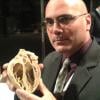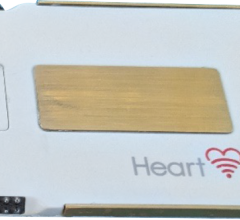
The Medicalgorithmics PocketECG Holter monitor offers real-time, remote, wireless ECG recording and tracking. Real-time data review may be able to help diagnose an arrhythmia quickly, reducing the amount of time the patient needs to be monitored. Also, 24/7 data offers a more complete picture of the patient's health, rather than fragments of data from older Holter and event monitor systems.
There is a shift occurring in remote ECG monitoring technology used in Holters and cardiac event recorders that may help speed or enhance the diagnosis of arrhythmias. As we have already seen in business and consumer information technologies, there has been a revolution in recent years for how much and how fast digital data can be transmitted wirelessly. Data storage also has greatly expanded and the costs have significantly dropped. Lastly, complex software algorithms can now sort through large volumes of data to pull out specific, useful information to greatly reduce the amount of time it would take to review it manually. These components have come together in cardiac monitoring devices to enable real-time, 24/7 monitoring on all data. The future standard of care will likely be online, real-time monitoring combined with smart algorithms or artificial intelligence.[1]
Previously, most devices only recorded segments of data during events, or when the patient initiated recording on a device. Holters only recorded data over a couple days at most. In both cases, these devices had to be brought back to the doctor by the patient and the data downloaded and analyzed by a doctor. If no cardiac events occurred during the recording period, or were not symptomatic so the patient did not initiate recording, no diagnosis could be made. Additionally, most of these systems only recorded a snapshot of cardiac activity and did not offer a complete picture of what was going on with the patient's heart. Even if an event is recorded, many conditions cannot be diagnosed based on one ECG from a short-term event. Accurate diagnosis may require longer-term monitoring over days or weeks.
Today's new generation of remote ECG monitoring technologies now enables 24/7 data recording. Some systems also enable real-time, wireless data analysis, which offers advantages over the old process of reviewing recorded data after a patient turns in a device.
More Data Points Lead to More Accurate Analytics
Recording all cardiac data 24/7 enables a complete picture of the patient's cardiac activity to establish a better diagnosis, rather than depending on a small sampling of short duration recording strips. Some intermittent smaller events that might not be recorded can be a sign of underlying disease and can be missed with only a small snapshot of recordings. Event monitors that only record a short period of data during an event will show there is an arrhythmia, but they cannot show the severity of the problem because of the lack of additional data. Vendors offering continuous recording monitors refer to the increased diagnostic yield of having the additional data.
For monitoring systems that use more advanced algorithms, this additional data from continuous recording enables better statistical analysis. This might include recording the complete number of heart beats, the patient's average heart rate and the number of minor and significant events over a given time period to calculate better, quantifiable assessments. The comparison in statistical accuracy can be made with clinical trials that only have 50 patients, as opposed to the same trial powered with 10,000 patients.
Some mobile cardiac telemetry systems use ECG trending data recorded in samples every 10 minutes for 30 seconds. This can help calculate things like atrial fibrillation (AF or afib) burden, but the depth of the data is intermittent, and events or cardiac data that might be useful in these evaluations might be missed in the long periods between sampling.
Constant Holter recording over one or two days offers detailed data, but the limitation is the duration of the data collection. A large number of clinically significant, symptomatic arrhythmias are recorded after the first 48 hours of monitoring, beyond the typical wear period for Holter monitors.[2,3] This has led to the creation of longer term monitoring solutions.
24/7 ECG Recording Systems
Here are some examples of newer generation, continuous recording devices that can be used for longer-term monitoring. Some offer real-time, wireless data uploads for contant remote monitoring. Others only allow data download after the device is returned to the physician's office.
• Implantable cardiac monitors (ICM) include the Medtronic Linq, Abbott Confirm Rx and the Biotronik BioMonitor 2. These offer a solution for long-term monitoring of patients (months or years). Placed just under the skin, they offer continuous monitoring for up to three years (the life of the battery). These devices offer an option for non-compliant patients that may not keep up with battery replacements or wearing a longer-term Holter. The Linq is the smallest ICM. The Confirm is the first ICM compatible with the patient's smartphone, which is used for data transmission.
• The Medicalgorithmics PocketECG is a lightweight device about the size of a smartphone. It uses three leads from the device to the chest. The system provides a constant stream of ECG data transmission on an ongoing basis up to 30 days. The system has a built-in accelerometer to gauge a patient's physical activity when an arrhythmia occurs.
• The novi+ Patch ECG Holter is a small patch-type monitor that adheres to the patient's chest. It offers three channels of ECG with continuous recording up to 14 days.
• ScottCare’s Chroma2 Holter is available with five or seven leads and automatically records three channels of continuous ECG. It can be programmed for durations of one hour, up to 30 days.
• The Biotricity Bioflux mobile cardiac telemetry device is a single unit that both monitors and transmits ambulatory patients' ECG information. It is a three channel ECG device, recording up to 30 days of data.
• iRhythm Zio XT is a chest worn adhesive patch that records beat-to-beat data for up to 14 days.
• Cardiac Insight's Cardea Solo patch-type monitor records ECGs for up to seven days.
• Bardy Diagnostics CAM (Carnation is the newest version) is a small, adhesive patch-type monitor that records up to seven days of continuous cardiac data. The one-channel device uses a P-Wave centric detection system and is supposed to lower signal noise.
Real-time 24/7 ECG Recording
A differentiation needs to be made between systems offering continuous recording and continuous monitoring. If a system does not have a way to wirelessly connect to the monitoring company, clinicians will not be notified of any critical events. Also, if enough data is collected to make a diagnosis, the patient can be notified to come back to the doctor's office for consultation, rather than waiting days or weeks for a future schedule appointment. This can speed patient therapy and potentially cut the time needed to monitor patients.
Systems offer real-time 24/7 monitoring, constantly recording and sending data to a third-party service. The monitoring service system software watches for and flags significant cardiac events, and can alert clinicians via e-mail. The patient's data is also accessible at any time by doctors through a web connection.
Physicians using the Medicalgorithmics system can access full disclosure ECG data and complete statistical reports online on any device through an internet browser. When using the PocketECG as a Holter, clinicians can remotely extend monitoring time if the gathered data is not yet conclusive.
ScottCare's TeleSense remote cardiac rhythm monitor offers mobile cardiac telemetry, cellular event and Holter functionality. It can be used for up to 30 days of continuous monitoring. It uses Wi-Fi or cellular remote wireless access to enable immediate transmission of arrhythmia events. It uses data analysis software that enables event triage. The system auto-triggers and auto-transmits any significant events.
Consider Battery Duration and Number of Components When Using Long-term ECG Monitoring
One of biggest limiting factors with newer generation, continuous monitoring systems is battery life. While a device can record continuous data for long periods, vendors do not usually advertise the fact that the device's battery needs to be changed out after just a few days of operation.
The Chroma2 Holter will operate up to 72 hours on a single AAA battery. The novi+ Patch system can operate for seven days before the patient needs plug into power for its built-in rechargeable battery. The Telesense system battery is rated for 50 hours before it needs to be recharged.
Another thing to think about when evaluating these devices is how many components are required. A single device that records and transmits data is ideal because it simplifies patient use/compliance and maintenance. If a unit requires a base unit in the home to upload data, the device will not be sending data in real-time, but this might not be an issue for most patients. If a separate cellular transmission device needs to be carried by a patient, it means wireless connectivity (such as Bluetooth pairing) needs to be established between the recording and transmission devices. Additionally, batteries will need to be replaced in two separate devices, rather than just one.
This is Part III of a series of blogs on advances in cardiac monitoring technology. Read the other blogs in the series:
Movement Toward Simpler, Wearable Cardiac Monitoring
Extending Cardiac Monitoring Duration Catches Sporadic Events, Improves Diagnosis
Algorithms to Automate Review of Mobile ECG Device Data, Detection of Arrhythmias
Advances in Mobile Cardiac ECG Monitoring Technologies — Series landing page containing all articles
References:



 August 29, 2024
August 29, 2024 
